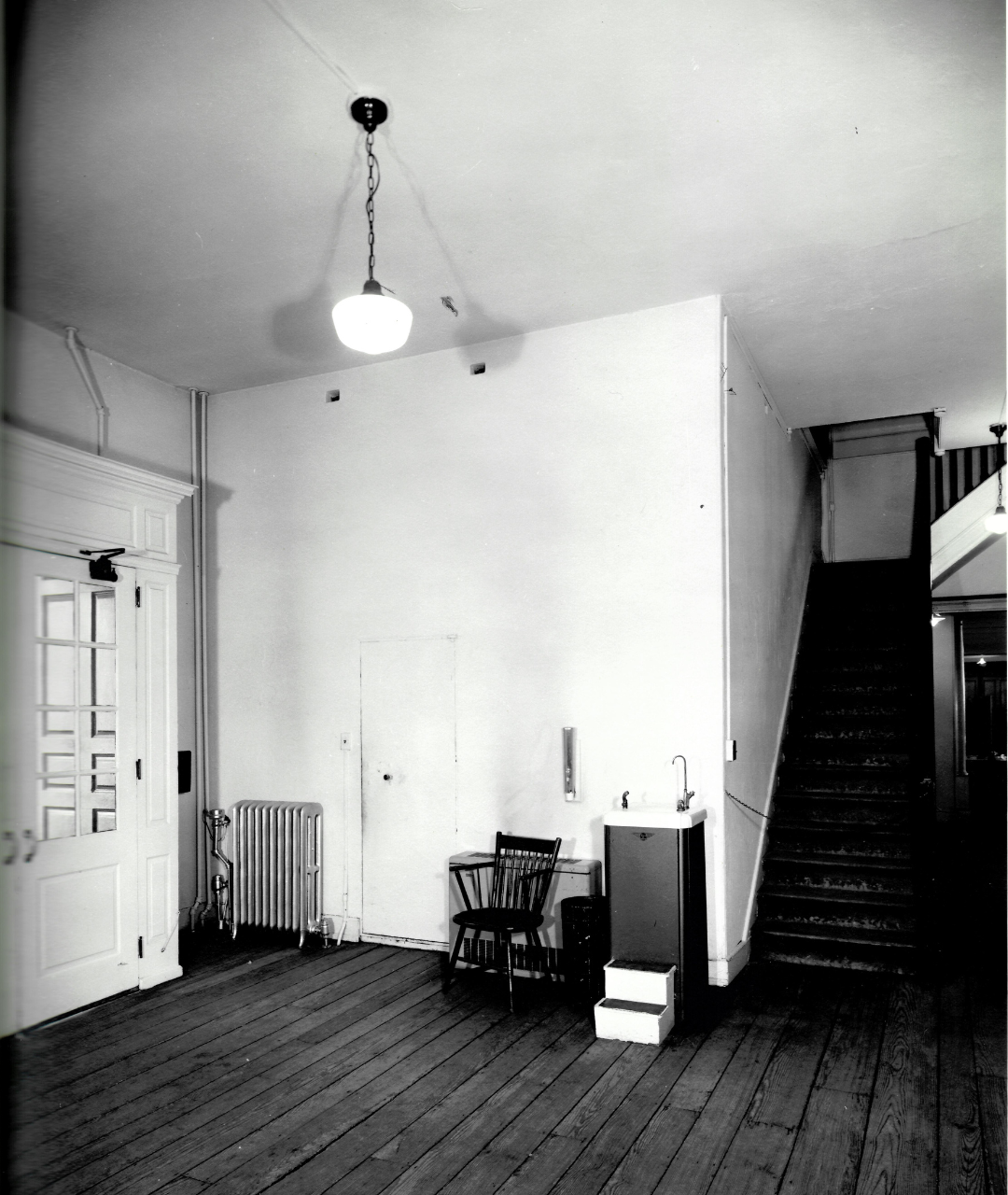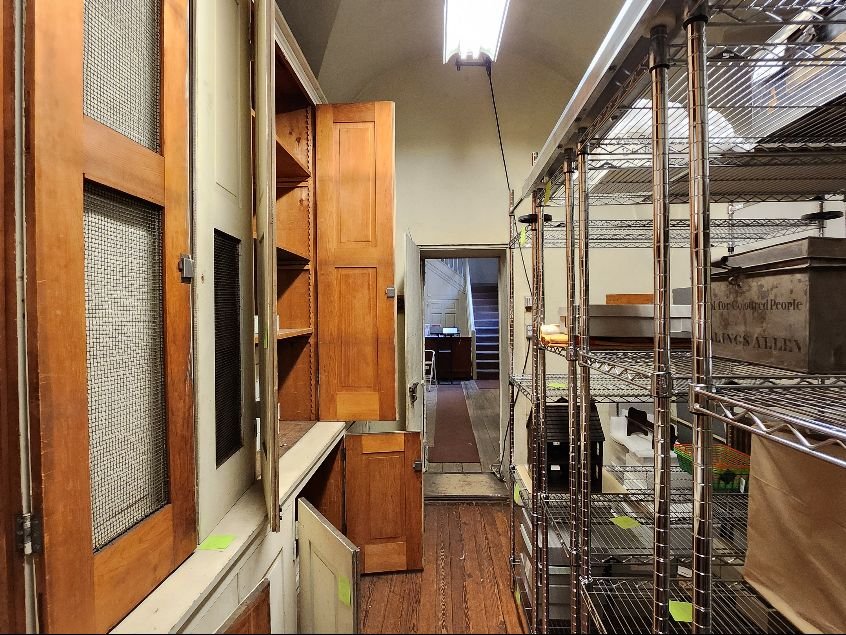“…A Proper Place to Deposite the Records & Papers” of Philadelphia Quakers
Special thank you to ASMHPT Trustee, George McNeely, for this feature.
In last month’s newsletter, we featured what is believed to be the original floor plan for Arch Street Meeting House, designed by master-builder Owen Biddle, Jr. Prominently located just off the main entrance in the center block of the meetinghouse is the Vault, or ‘Fire-Proof’, a room that most do not know exists.
To accommodate a rapidly increasing Quaker population at the end of the 18th Century, Philadelphia Yearly Meeting (PYM) decided to build Arch Street Meeting House. As shown in Biddle’s original plan, a key feature of ASMH’s 1804 complex was a fireproof vault to safeguard PYM's accumulating records. A committee had been formed, and they decided that the:
“… Papers of Value & Importance to our religious Society, lying in different Places exposed to Loss & perhaps entire Destruction by Fire, induces in Friend’s Minds a Belief that such prudent Means as may be within our Power ought to be used for their better Preservation”. (Meeting for Sufferings, 1800)
Originally referred to as the ‘Fire-proof’, Biddle designed a rectangular room with double-thick brick walls and a metal door. The room had a large north-facing window with iron shutters that would have been essential for reading and managing of the records without candlelight. Over the last two centuries, the Vault has seen a variety of uses (including a coat closet!), and has been the repository for incredible artifacts from throughout Quaker history, like a desk belonging to meeting member Anthony Benezet and the 1688 Germantown Petition Against Slavery. Although many of the Vault’s records were moved to more modern storage facilities at Haverford College in the mid-2000’s, the Vault is still used as ASMH’s primary onsite archive, today.
Quakers of the past were determined to protect ASMH and it’s archival collection from fire, and now it’s our turn to continue this work. The world has watched in horror as fires have repeatedly ravaged historic landmarks - in 2019 the medieval Cathedral of Notre Dame’s roof caught fire and sent a plume of smoke high above the historic skyline of Paris. More recently in 2023, ASMH’s neighbor, Carpenter’s Hall, was the target of arson, and in 2024 the Borsen (stock exchange) building in Copenhagen, built in the 17th Century, was nearly completely destroyed. The list is sadly endless.
Arch Street Meeting House Preservation Trust (ASMHPT) is working diligently to preserve the meetinghouse and our historic archives by installing a brand new fire-suppression system. The vault is a standing reminder of Quaker's 220 year dedication to the meetinghouse’s stewardship, and ASMHPT strives to continue to uplift that testimony as we protect the historic property from a devastating fire.


Meet Quaker History
In late August, ASMH Museum Volunteer and member of Newtown Meeting, Jennifer Wolf, visited Jordans Friends Meetinghouse & Burial Ground in Buckinghamshire, England. Jordans Burial Ground is the final resting place of Pennsylvania’s Quaker founder, William Penn, Proprietress Hannah Callowhill Penn, and other members of the Penn family.
Constructed in 1688 shortly after the Declaration of Indulgence was issued, Jordans Meetinghouse was almost lost to a catastrophic fire in the Spring of 2005. The Quaker community in England and beyond came together to preserve the meetinghouse, and it has been successfully restored.


